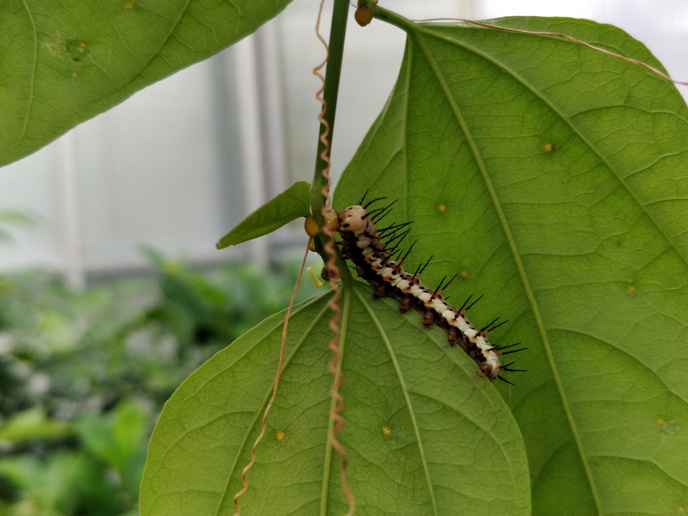How tropical butterflies acquired poisonous chemical defences to survive in the wild
Brightly coloured and easy to pick out, heliconiines(opens in new window) are toxic butterflies because they contain cyanide-releasing compounds called cyanogenic glucosides. These compounds can both be biosynthesised or acquired from Passiflora plants, their coevolutionary partner, during larval feeding (sequestration). Funded by the Marie Skłodowska-Curie Actions programme, the Cyanide Evolution project investigated how different species balance cyanogen biosynthesis and sequestration and what is the fitness cost of their toxicity. Furthermore, the research revealed clues to the genetic basis of heliconiine toxicity and how this varies in different populations. Researchers gathered data related to the heliconiines and Passiflora plants from the Atlantic Forest, a biodiversity hotspot often overlooked.
How evolution allowed butterflies to feed on toxic plants
“The relationship between heliconiine butterflies and passionflower(opens in new window) plants was used to exemplify the coevolutionary theory (1964) describing the arms race between plants and insect herbivores. Half a century later, we still do not understand how the chemical mediation of the heliconiine-Passifloraceae interaction works,” notes project coordinator Érika Pinheiro De Castro. “Elucidating this relationship is important because while some heliconiines have become an agricultural pest in passionfruit fields and invasive species threatening native biodiversity, there are certain monophagous species vulnerable to extinction. We sought to further understand how heliconiine toxicity has shaped their diet breadth,” adds De Castro. In collaboration with the Smithsonian Tropical Research Institute, researchers raised Heliconius melpomene and Heliconius cydno larvae on four Passiflora species, each with a different cyanogen profile, and performed targeted metabolomic analyses.
Prominent research findings
Researchers discovered that the butterfly’s chemical defences vary, namely, demonstrate phenotypic plasticity, depending on the environment. They biosynthesise cyanogens when they cannot be acquired by their host (Passiflora biflora), while they reduce biosynthesis when they sequester them from other passionflower hosts. This biochemical plasticity allows them to maintain their toxicity levels regardless of the toxic profile of the host plant. “Yet, this biochemical plasticity comes at a fitness cost for more specialist species, as their adult size and weight negatively correlate with biosynthesis levels,” explains De Castro. The project team also discovered that the ability of Heliconius butterflies to maintain their toxicity levels relies on pollen feeding. “For example, pollen deprivation has a different impact on Heliconius erato depending on their sex and age. Without pollen, old females (45 days) reduce their fertility, body mass and toxicity levels. Males are less affected by pollen deprivation,” adds De Castro. Another major goal was to decipher the evolutionary trajectory of cyanogen biosynthesis. Researchers concluded that gene duplications cause Heliconius to increase their toxicity. “Recent research has shown that Zygaena moths owe their ability to biosynthesise cyanogens to P450 genes. Homologous genes were also found in the genome of Heliconius melpomene. While searching for these orthologues in a dataset containing 58 heliconiine genomes, we found that cytochromes CYP405As were only duplicated in the Heliconius and Eueides genera. These genera are more toxic than other heliconiines that only have cytochrome CYP405A4,” explains De Castro. Project research is ongoing. “Understanding how biochemical plasticity shapes the diet breadth of insect herbivores is timeless! There are certain heliconiine butterflies that are specialist species vulnerable to extinction and who might not be able to cope with climate change. By contrast, more generalist species are becoming pests and could even invade other ecosystems threatening local biodiversity,” concludes De Castro.







